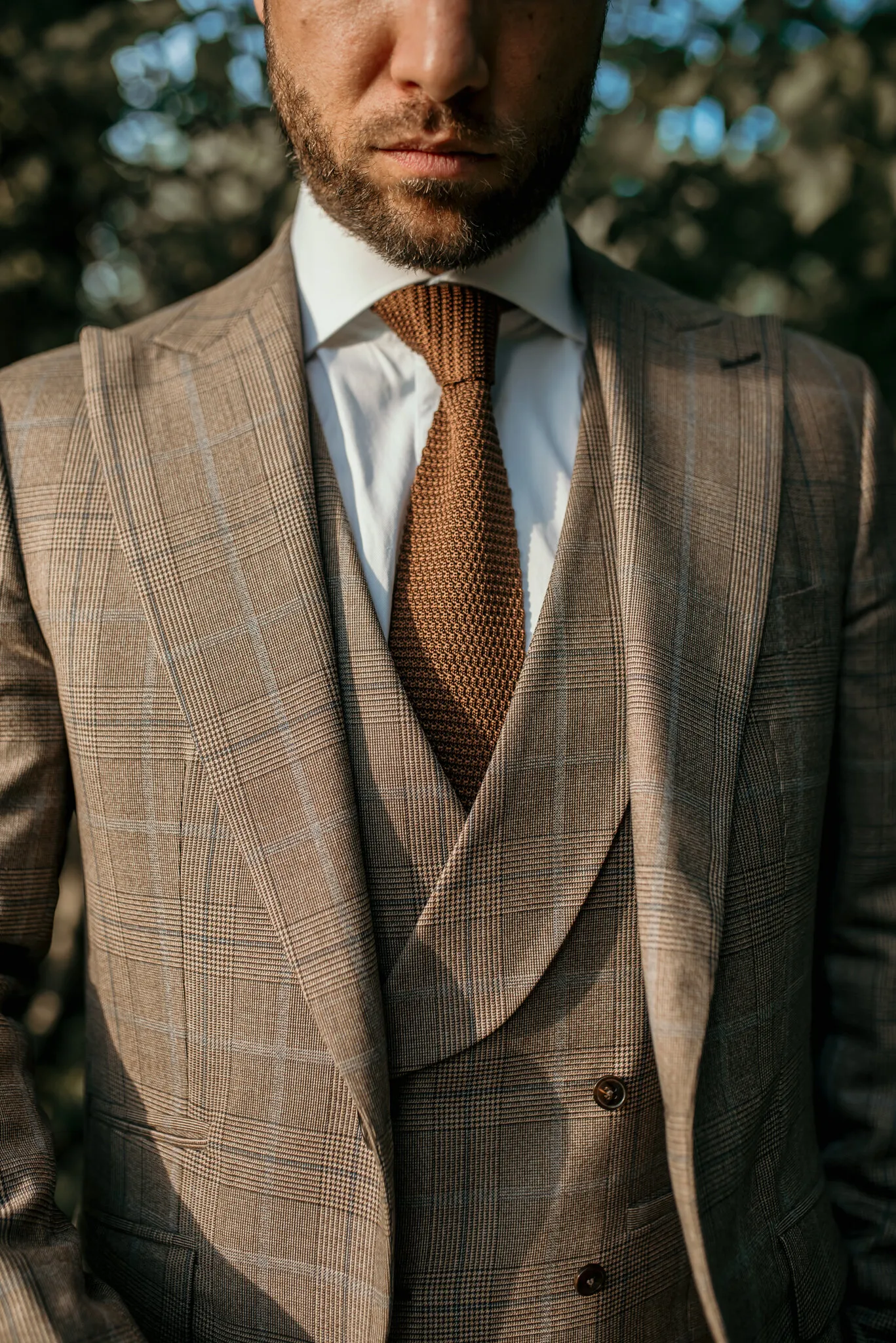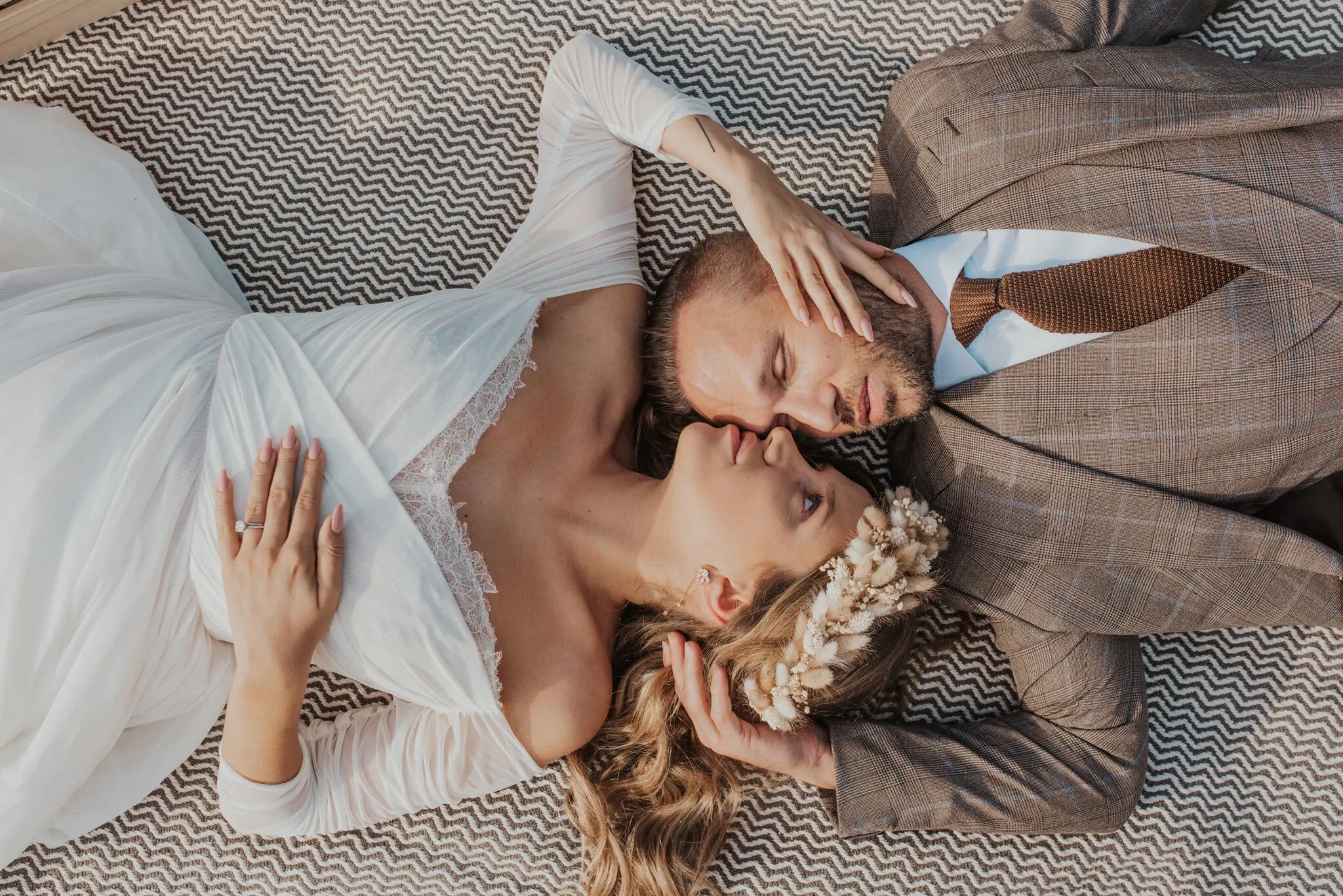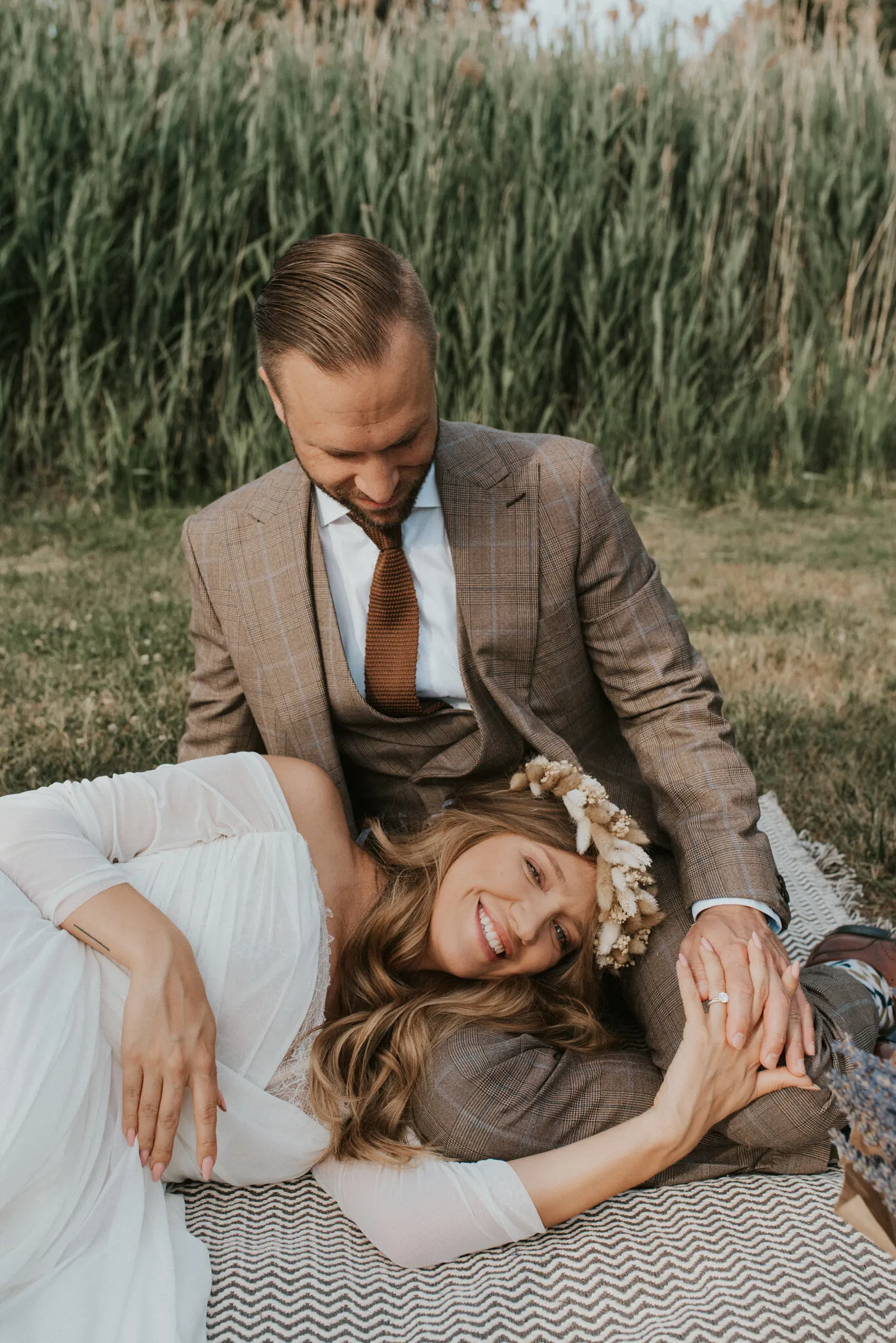To sum up,
Choosing a Prince of Wales patterned suit for your wedding can be an elegant and sophisticated option. This is a classic herringbone pattern, usually composed of subtle checks, and it adds a touch of style and distinction to the suit.
Parts details
The jacket
For this tailored suit, we chose a straight, two-button jacket. It features sartorially signature wide lapels. The buttonhole is also hand-stitched, or “Milanese”, for an upscale, hand-crafted look.
The vest
The waistcoat is double-breasted, with two rows of buttons to reinforce the sartorial look. It’s an undeniably elegant choice that follows the most classic codes of men’s suits.
Pants
In keeping with the spirit of bespoke suits, pants are high-waisted. The wide leg ends below the ankle, providing a nice fit and highlighting the shoes you’ll be wearing.
The history of the Prince of Wales pattern
The iconic pattern
It dates back to the early 19th century in England, where it became a symbol of style and elegance in the world of men’s fashion. It takes its name from the Prince of Wales, a title held by the heir to the British throne.
This pattern is characterized by subtle checks forming an irregular herringbone pattern. These checks are generally made up of thick, thin lines that intersect to create a distinctive, elegant pattern. It is often produced in sober colors, such as gray, brown, navy blue or black.
The exact origin is unclear, but it is widely associated with King Edward VII, who was Prince of Wales before ascending the throne in 1901. It is said that he popularized the pattern by frequently wearing it on his clothes.
Want to see more ?
Credits,
Photographer : @byanaisphoto
Model: @ellakatzz
Dress: @dreamityourselfmontreal
Suit: @blandindelloye
Flowers: @timelessflowerdesign


